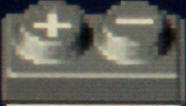 |
Thoughts on Electrical Safety*
These thoughts will be mercifully brief. There are vast resources on the web to help you protect yourself from errant electrons. So many, in fact, that I won't even provide any links, although you really should check out the Tesla Coil guys on this subject.
The Prius has a high voltage battery. When fully charged its terminals are at about 230V. If you touch them while they are live it's sort of like putting your hand in a lamp socket after traveling to Europe. This is likely to be painful, but probably won't kill you. Far more dangerous is touching a 230V terminal with your hand while some other portion of your body is somehow attached to the other side of the battery. Also quite dangerous is somehow getting a piece of metallic jewelry across the battery terminals while you're wearing it. This will burn you badly enough that you might wish it had killed you.
When you read the Prius service manual, it will warn you to:
- Disconnect the negative terminal of the auxiliary battery. (Doing so will prevent the HV relays from energizing, making it much more difficult to touch any live circuitry.)
- Remove the "service plug." (This disconnects the battery sections so that no current can flow.)
- Put the service plug in your pocket. (Presumably this will prevent your co-workers from playfully reinserting it.)
- Put tape on the service plug socket contacts. (This prevents you from touching them and getting a shock, assuming the other terminals of the battery have a current path between them.)
- Wait five minutes after removing the service plug. (This allows HV capacitors in the inverter to discharge, assuming that they were charged in the first place, which they may have been if you removed the service plug right after turning off the vehicle.)
- Wear insulated gloves. (Just in case you somehow forgot to do all the above.)
To these recommendations, I add the standard "Keep one hand in your pocket while working around high voltage," although after taking all those precautions the high voltage is pretty well isolated. Also, when reinstalling the service plug, make sure it's properly and fully inserted. If it's not installed correctly, expect to see the big red ! and suffer some confusion bordering on remorse 'til you figure it out.
Although the Prius protects itself with fuses and fusible links, when making external connections as I have done, it is important to add your own protective circuitry. When doing so, be aware that using fuses or breakers rated for AC is unsuitable and unsafe for DC. Make sure that these devices have a DC Voltage/Amperage rating commensurate with the Prius and your expected external current demand. One reader has noted that "Littlefuse KLKD series or Bussmann DCM... are fast-acting, 600VDC rated, available in all the right amp ranges, and around $15 each at Mouser."
A final suggestion: If you're uncomfortable with electrical stuff, get someone to hang out with you while you're working on it. If you're really uncomfortable with electrical stuff, you do the hanging out and get somebody else to do the pokeage.
*As far as I know, simply reading about this science project poses no danger of electrical shock, although you might collapse from boredom and get a bad case of keyboard face. If you are somehow inspired to become better acquainted with the innards of your Prius, please follow as many precautions as you can. If you are both inspired and litigious, see those nice orange wires? Just grab one in each hand and...
Updated 28 June 2006